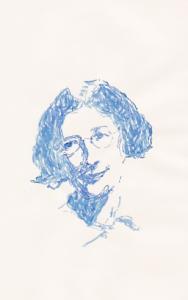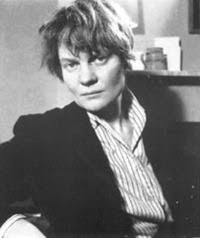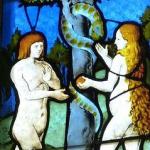Anne Lamott tells the story of an older woman who, along with other active geriatric members of her adult living community, was advised by the leader of a weekly therapy group to begin and end each day with a specific prayer or meditation—sort of like morning and evening prayer. Before long, the old woman and other members of the group shortened the meditation to “Whatever” at the beginning of the day and “Oh well” at the end.
“Whatever” and “Oh well” strike me as perfectly good comments when looking forward toward a new year and looking back at the recently completed year. The idea of choosing a word for the new year is only slightly better than New Year’s resolutions, but in his last sermon of 2024, the pastor of the Lutheran church Jeanne attends and to which I occasionally accompany her mentioned the idea. I think he said his word for the new year will be “peace.” It immediately occurred to me that mine would be “attention,” or its companion “attentiveness.”
occasionally accompany her mentioned the idea. I think he said his word for the new year will be “peace.” It immediately occurred to me that mine would be “attention,” or its companion “attentiveness.”
I know something, at least intellectually, about attention and attentiveness. Those who read this blog regularly know of my love for Simone Weil; her work has been both important to me personally and the central focus of much of my academic research and writing over the years. I contributed the entry on “Attention” (as well as one on “Order of the World”) to The Bloomsbury Handbook of Simone Weil that will be published in July. I use Weil’s work in many of my classes and find that her understanding of attention and attentiveness is a reliably effective hook to get undergraduates interested in the thought of this strange and beautiful 20th century philosopher and mystic.
Briefly put, Weil defines attention and attentiveness as learning to remove oneself from the center of the world and cultivating the ability to see the reality of something other than oneself as it is, unfiltered through the lenses of the self. Weil writes that attention is “analogous to genius”; elsewhere, she describes the capacity to give attention to one who is suffering “a miracle.” The attending person’s “soul empties itself of all its own contents in order to receive into itself the being it is looking at, just as he is, in all his truth. Only he who is capable of attention can do this.” The stakes are the highest imaginable. “The pure and authentic values—truth, beauty and goodness—in a human being’s activity are the result of one single and self-same act, a certain application of the attention at its fullest to the object.”
Weil develops her concept of attention most fully in what has come to be known as her “School Studies” essay, an essay that first introduced me to Simone over thirty years ago. She argues that the primary goal of academic work has little to do with content and almost everything to do with learning to engage with something—a mathematics problem or Latin translation for instance—that “is what it is” and is not subject to modification or simplification simply because we wish it to be. Weil’s primary stated goal in this essay is to convince the reader that the ultimate importance of attentiveness is that it is the essence of prayer, an openness to what is greater than us and a dedicated refusal to create God in our own image. But it is her discussion of attention turned toward other people that my students (and I) find to be both practical and profound.
Toward the end of the “School Studies” essay, Weil discusses how attention can transform human relationships.
Not only does the love of God have attention for its substance; the love of our neighbor, which we know to be the same love, is made of this same substance. Those who are unhappy have no need for anything in this world but people capable of giving them their attention.
In a different essay, Weil uses the familiar story of the Good Samaritan to illustrate what attention looks like when directed toward one who is suffering or in need.
Creative attention means really giving our attention to what does not exist. Humanity does not exist in the anonymous flesh lying inert by the wayside. The Samaritan who stops and looks gives his attention all the same to this absent humanity, and the actions which follow prove that it is a question of real attention.
The Good Samaritan story illustrates attention in action simply because the Samaritan sees what the other passersby do not see—a person in need rather than an annoyance, an enemy, or a threat. Returning to the “School Studies” essay, Weil describes how attention can transform human interactions and relationships.
The love of our neighbor in all its fullness simply means being able to say to him: “What are you going through?” It is a recognition that the sufferer exists not only as a unit in a collection, or a specimen from the social category labeled ‘unfortunate,’ but as a man, exactly like us, who was one day stamped with a special mark by affliction . . . this way of looking is first of all attentive.
 Iris Murdoch, strongly influenced by Simone Weil’s work in several ways, reflects the connection of love and attention in this beautiful definition of love:
Iris Murdoch, strongly influenced by Simone Weil’s work in several ways, reflects the connection of love and attention in this beautiful definition of love:
Love is the perception of individuals. Love is the extremely difficult realization that something other than oneself is real. Love . . . is the discovery of reality.
It is one thing to introduce attentiveness to college students in the classroom; it’s another thing entirely to effectively incorporate it into my daily life. It’s that transition from head to heart and practice that I’m seeking to engage with during the coming year. The reason why Weil calls true attentiveness “miraculous” is because it runs contrary to our natural human wiring. Each of believes herself or himself to be the center of the universe; things are important or worth of our regard only to the extent that they affect us. The first thing to remember concerning attentiveness is that it is not just another technique to master or thing to do. It is, at its heart, an intense passivity and openness, something described well by philosopher John Kaagin his fine book Sick Souls, Healthy Minds.
Human meaning often depends on seeing things clearly as they appear and pass away; seeing things clearly means not acting and willing, but rather being quiet and still—in seeing something else.
I invite you, if you are so moved, to join me with seeking to be more attentive during the coming year.













